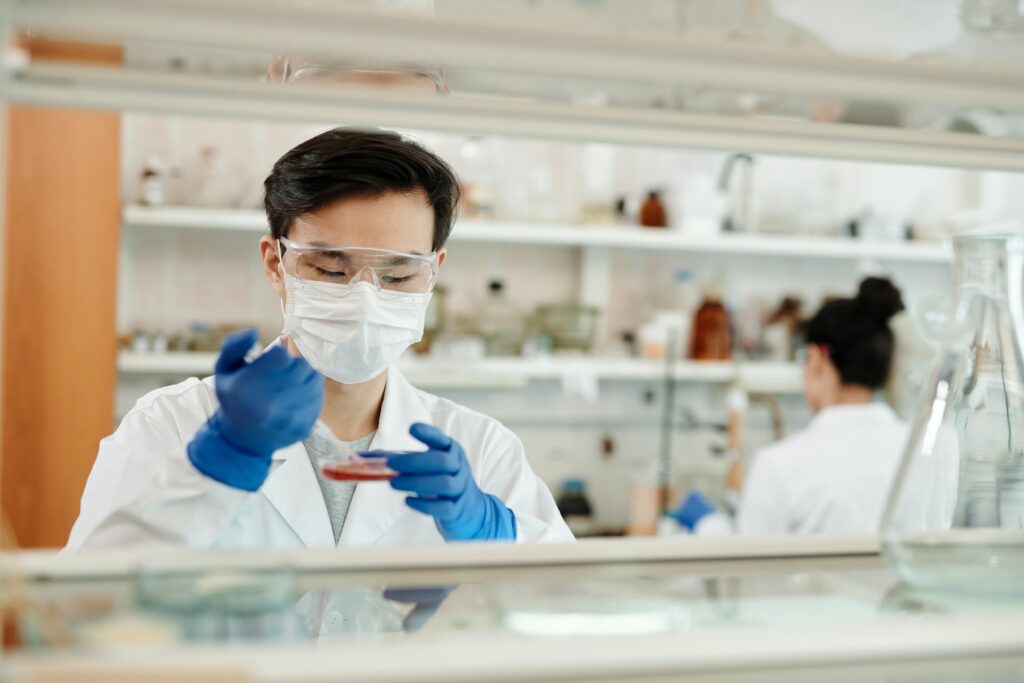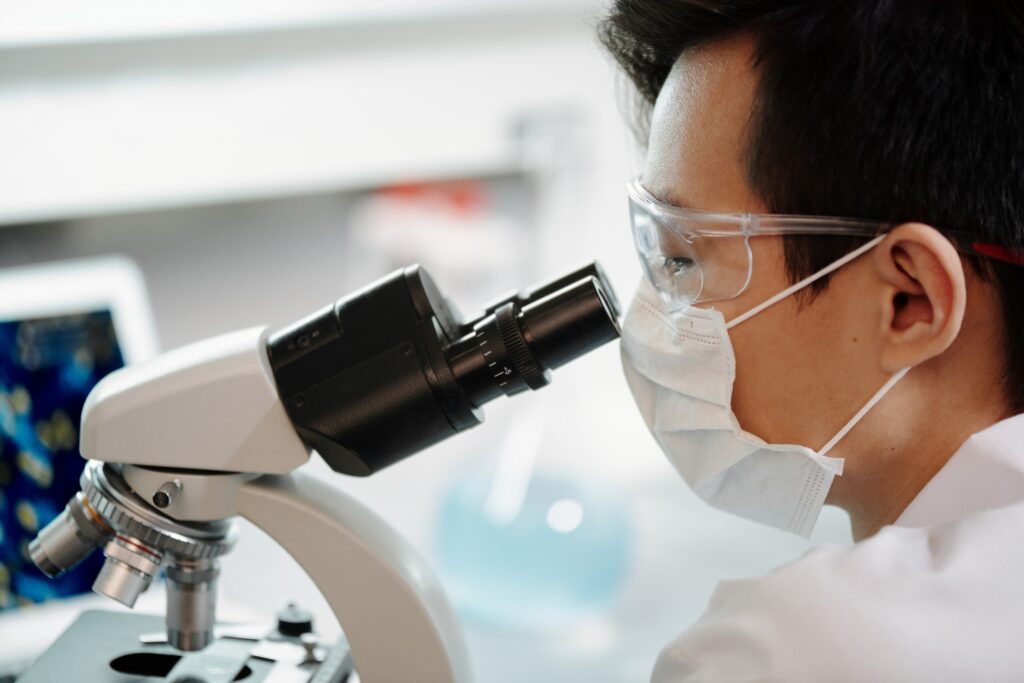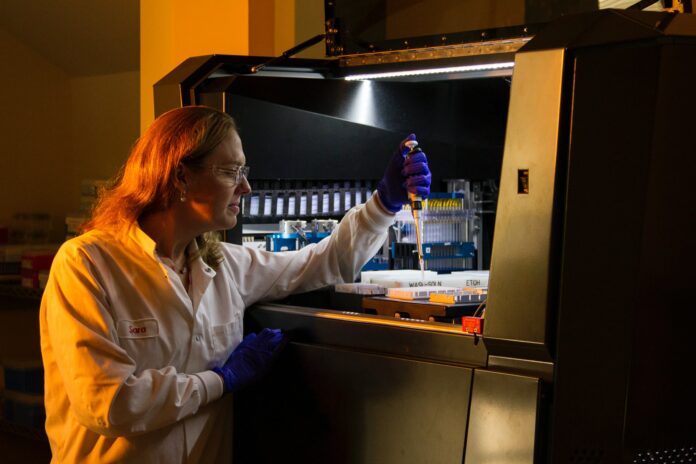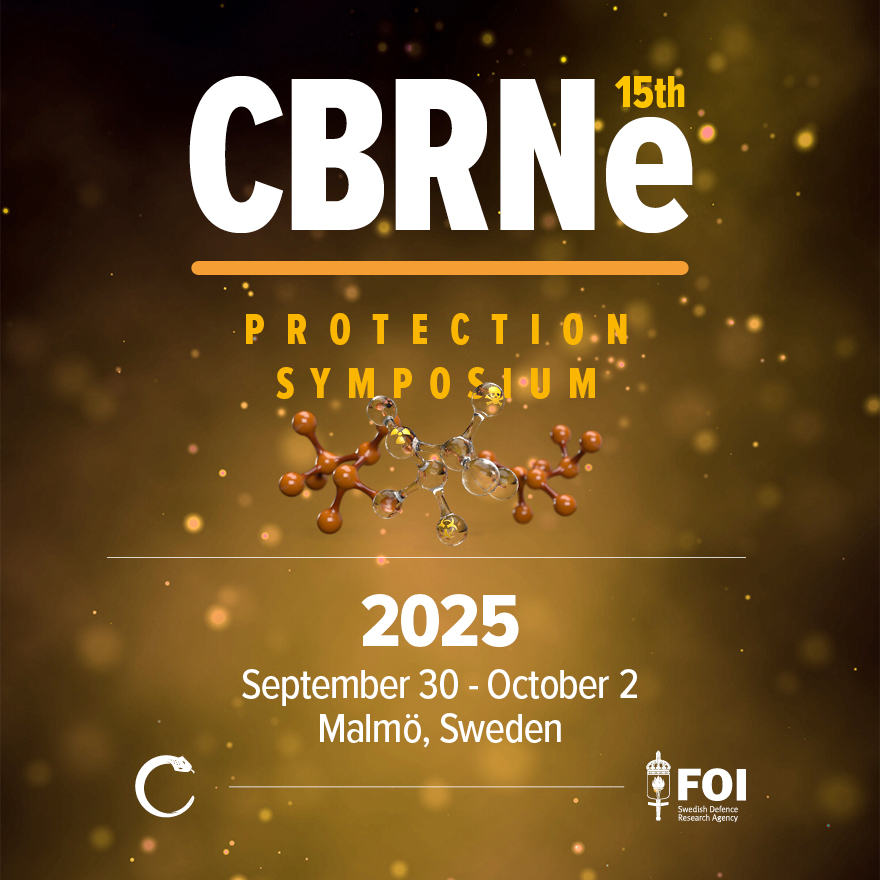By Dr. Diane DiEullis, Senior Research Fellow, National Defense University and, Prof. James Giordano, Departments of Neurology and Biochemistry, Georgetown University Medical Center, Washington DC, USA
The biotechnology revolution
The convergence of biotechnology, automation, big data, and computational science (i.e.-machine learning/artificial intelligence; ML/AI) is fostering a “biotechnology revolution”, whereby current and emerging innovations are creating novel methods, tools, and products for many sectors of the global economy. The past decade has afforded proof (of both concept and capability) that technologic advancement is enabling biology to be purposefully engineered. Application of the “design, build, test” cycle to synthetic biology is generating high value commodities that impact traditional sectors, such as medicine and agriculture, as well as newly viable domains such as production of fuels, and industrial materials. Not merely evolutionary (i.e.- a gradual progression or shift), such developments are truly revolutionary, in that they are transformational and, in many ways, the trends and manifestation they foster are likely irreversible. While these innovations offer potential to solve heretofore intractable problems of healthcare, environment and resource sustainability, newly emerging techniques and technologies also have implications and direct viability for dual use.
New tools for bioweapons?
As we and others have noted, bio-engineering (particularly when conjoined to information technology) can enable the manipulation, as well as the entire reconstitution of microbes from their genetic identities to produce “precision pathogens”. While there is no evidence to date suggesting or supporting that SARS-CoV-2 was a bioweapon; the COVID-19 experience, as exemplar, has shown that the effects of a biological agent need not evoke “mass destruction” or lethality per se, but rather, only to cause socio-economic instability so as to evoke considerable harm that could be leveraged to particular advantage.
Are we “there” yet?
The initial stages of the biotechnology revolution are reflective of “as is” replacement of chemical entities that are currently manufactured; meaning that the only difference in these products is their mode of production (viz.- through biological means instead of through biochemical transitions from petrochemical or other precursors). However, here too exists dual use capability in that harmful chemical agents could be produced through biomanufacturing – a process that can be harder to identify and trace. To be sure, these possibilities are not methodologically “easy”, and require knowledgeable expertise and the ability to isolate and scale-up those agents intended for harm; key factors that can limit the number and type of actors capable of mounting such efforts. But these limitations could be overcome, at least in part, by recently developed machine learning algorithms, created from public chemical pathway datasets, which, while intended to facilitate drug development, have also been shown to be viable for generating novel biological and/or chemical weapons.
Moreover, the current status quo of ‘as is’ replacement-level capabilities will soon be superseded by the ability to generate entirely new biological and chemical entities. To this end, there have already been initial successful attempts to create synthetic amino acids that are not found in living organisms, and novel microbes that can fix nitrogen and/or exert antiparasitic characteristics, which could fortify crop production and yields to sustain global food supply. But it is not difficult to imagine ways that current and emerging capabilities in gene editing and synthetic biology could be utilized to menace important agricultural assets and influence the relative stability of international food chains to affect economic hegemonies and geo-political balances of power. Thus, while we may not be “there” yet, we are certainly on the proverbial path, and therefore must be attentive to each step (forward, sideways, and/or backward), tripping hazards, and signposts of risk and threat as we plan and progress along the way ahead.

Mapping a deliberate, thoughtful approach to the biotech future
Currently, there are few measures in place to protect against the dual use of synthetic biology. Biomanufacturing beneficial chemicals and microbes could serve to shroud the development of bioweapons, and both the programs and the products would therefore be difficult to surveil and identify. Beyond the development of “as is” biomanufactured entities, the creation of novel synthetic amino acids could have unknown effects when incorporated in biological organisms; and synthetically-generated microbes could – and likely would – have unknown impact(s) upon a host of environmental, economic, public health, and national security domains. Here again, we need only reflect upon the disruptive influence of COVID, a naturally-occurring pathogen, to gain insight to, and perspective of the scope and profundity of disruption that is possible.
While identification, definition, and discussion of risks are important, their address through realistically-informed policy is essential. We have noted promising efforts to include updating synthetic DNA screening guidance in the United States (US), and broader enterprise toward global use of synthetic DNA screening as a central pillar of security in the growing bioeconomy. Additionally, the recent reconvening of the National Science Advisory Board for Biosecurity (NSABB) to revisit current US policy focal to dual use and gain of function research is equally laudable.
Still, given the prompting of evident benefits achievable through the majority of gene editing and synthetic biology endeavors, the ever-more rapid pace of developments in these fields poses an urgent challenge for (the typically slower pace of) biosecurity preparedness. All too often, those who are developing such innovations are unaware that their discoveries could be usurped to evoke harmful effect and outcomes. For example, the demonstrated capability of ML/AI to identify and develop biochemical weapons was only recognized after the ML/AI tool had been created and employed (to generate potentially new pharmacotherapeutic agents), as noted previously.
We have often promoted the maxim of “measure twice and cut once” as a call for prudence, and do so here once again. To wit, we strongly advocate considering biosecurity beyond its traditional definition, and to instead extend both the term and its practices as a design principle. Much risk can be mitigated by early and ongoing efforts to identify, and weigh potential benefits, as well as near and future-term burdens, threats and possible harms. We believe that this approach will be crucial to developing and providing “built-in” biosecurity measures, which can be integrated within, and temporally apace with experiments as they are being proposed and undertaken; and, in this way fortify both preemptive and iterative articulation of protective oversight, guidance and governance. We posit that such “biosecurity by design” can and should become standard practice in international enterprise(s) in this space.

Addressing the ethical challenges of innovative biotechnologies
It is important to recognize that many – if not most – biotechnological advances are focal to and/or affect some aspect of human endeavor(s). Such innovations can – and are likely to – give rise to ethical, legal, social, and environmental issues (ELSEI) that reflect and influence their use, and regulation, as reflective of their acceptance or rejection by various communities of stakeholders affected. It could be argued that given the non-kinetic nature of socio-economic biotechnological influence, ELSEI do not represent traditional concerns associated with weapons of mass destruction (WMD). While this may have been true in the past, we believe it is no longer. To the contrary, we assert that these issues warrant consideration as political, military, and even commercial entities could pursue such technologies for (non-kinetic and/or highly asymmetric kinetic) engagements to leverage economic capabilities, affect regional hegemony, and in these ways, exert what philosopher Michel Foucault referred to as “biopower”[1]: tactics and strategies of domination focused upon manipulation and control of vulnerable and dependent dimensions of individuals’ and collectives’ biology.
Inherent to ‘biosecurity by design’ is the need to pose and address fundamental questions about the ethico-legal and ecological influence of biotechnologies as relevant to the communities that are involved in their intended – and potential – use and effects in real-world settings and practices. To be sure, we are encouraged by current efforts to explore how anticipated products of novel biotechnologies should be regulated, how fair distribution of benefits should be allocated, how safe and secure business practices should be developed and maintained, and how ethical norms for biotechnology use in and across the international community could be addressed and established. But these remain works-in-progress, and we believe rightly so, as the discourse and dialectic must be consistent and aligned with the tempo, extent and multinational scope and impact(s) of biotechnological enterprise.
**Disclaimer
The views presented in this essay are those of the authors and do not necessarily represent those of the United States government, Department of Defense, and/or the organizations and institutions that support the authors’ work.
References:
Diane DiEuliis, PhD, James Giordano, PhD, Balancing Act: Precision Medicine and National Security, Military Medicine, Volume 187, Issue Supplement_1, January-February 2022, Pages 32–35, https://doi.org/10.1093/milmed/usab017
DeFranco JP, DiEuliis D, Bremseth LR, Snow JJ. Giordano J. Emerging technologies for disruptive effects in non-kinetic engagements. HDIAC Currents 6(2): 49-54 (2019).
Diane DE, Charles L, James G (2018) Biodata Risks and Synthetic Biology: A Critical Juncture. J Bioterror Biodef 9: 159. DOI: 10.4172/2157-2526.1000159
DiEuliis, D, and Giordano, J. Why Gene Editors Like CRISPR/Cas May Be a Game-Changer for Neuroweapons. Health Security. Jun 2017. 296-302. http://doi.org/10.1089/hs.2016.0120
Field, M. Experts know the new coronavirus is not a bioweapon. They disagree on whether it could have leaked from a research lab. Bulletin of the Atomic Scientists, March 30, 2020. https://thebulletin.org/2020/03/experts-know-the-new-coronavirus-is-not-a-bioweapon-they-disagree-on-whether-it-could-have-leaked-from-a-research-lab/
DiEuliis D, Kohls NB, Giordano J. Of Nemesis and Narcissus: Lessons COVID may provide for enterprises – and ethics – of global health promotions and biosecurity. In: Woesler M, Sass HM (eds.) Medicine and Ethics in Times of Corona. Zürich: LIT Verlag, 2020, pp. 323-329.
Venkatram V, DiEuliis D, Giordano J. The COVID crisis: Implications and lessons for United States’ – and global – biosecurity. In: Lele A, Roy K. (eds.) COVID-19: Analysing the Threat. New Delhi: Pentagon Press, 2020, pp 397-405.
Urbina, F., Lentzos, F., Invernizzi, C. et al. Dual use of artificial-intelligence-powered drug discovery. Nat Mach Intell 4, 189–191 (2022). https://doi.org/10.1038/s42256-022-00465-9
Lowe, D. Deliberately Optimizing for Harm. Science, 15 Mar 2022. https://www.science.org/content/blog-post/deliberately-optimizing-harm
A new synthetic amino acid for an emerging class of drugs. 31 Aug 2014. https://phys.org/news/2014-08-synthetic-amino-acid-emerging-class.html
de Souza, Armanhi J, Arruda P. From Microbiome to Traits: Designing Synthetic Microbial Communities for Improved Crop Resiliency. Front. Plant Sci., 27 August 2020. https://doi.org/10.3389/fpls.2020.01179
Diane DiEuliis, James Giordano. Gene editing using CRISPR/Cas9: implications for dual-use and biosecurity[J]. Protein&Cell, 2018, 9(3): 239-240. doi: 10.1007/s13238-017-0493-4
DiEuliis D, Giordano J. The need for modernization of biosecurity in the post-COVID world. mSphere, 12: 8-14 (2022).
Federal Register. Vol. 87, No. 83, Friday, April 29, 2022. Notice. Screening Framework Guidance for Providers and Users of Synthetic Oligonucleotides. https://www.govinfo.gov/content/pkg/FR-2022-04-29/pdf/2022-09210.pdf
Biosecurity Innovation and Risk Reduction: A Global Framework for Accessible, Safe and Secure DNA Synthesis. January 2020. In collaboration with the Nuclear Threat Initiative (NTI). https://www.nti.org/wp-content/uploads/2020/01/Biosecurity_Innovation_and_Risk_Reduction.pdf
National Science Advisory Board for Biosecurity (NSABB) Meeting. February, 2022. https://videocast.nih.gov/watch=44823
DiEuliis D, Giordano J. COVID-19: Lessons to be learned for biosecurity and future operational environments. J Def Res Engineer 8(3): (2020). https://www.semanticscholar.org/paper/COVID-19%3A-Lessons-to-be-Learned-for-National-and-DiEuliis-Giordano/9fce43c0a24e5137d115d38a7e607278bc0bd209
Chen C, Andriola J, Giordano J. Biotechnology, commercial veiling, and implications for strategic latency: The exemplar of neuroscience and neurotechnology research and development in China. In: Davis ZS, Nacht M. (eds.) Strategic Latency: Red, White and Blue: Managing the National and International Security Consequences of Disruptive Technology. Livermore CA: Lawrence Livermore Press (2018), pp. 12-32. https://cgsr.llnl.gov/content/assets/docs/StratLatUnONLINE.pdf
National Academies of Sciences, Engineering, and Medicine. 2017. Preparing for Future Products of Biotechnology. Washington, DC: The National Academies Press. https://doi.org/10.17226/24605 .
Sleator, R.D. Synthetic biology: from mainstream to counterculture. Arch Microbiol 198, 711–713 (2016). https://doi.org/10.1007/s00203-016-1257-x
Sarah Carter and Diane DiEuliis. Mapping the Synthetic Biology Industry: Implications for Biosecurity. Health Security. Oct 2019. 403-406. http://doi.org/10.1089/hs.2019.0078
Mario Pansera, Richard Owen, Darian Meacham & Vivienne Kuh (2020) Embedding responsible innovation within synthetic biology research and innovation: insights from a UK multi-disciplinary research centre, Journal of Responsible Innovation, 7:3, 384-409, DOI: 10.1080/23299460.2020.1785678
Authors: Bio
Dr. Diane DiEuliis is a Senior Research fellow at National Defense University. Her research areas focus on emerging biological technologies, biodefense, and preparedness for biothreats. Specific topic areas under this broad research portfolio include synthetic biology, the US bioeconomy, dual use life sciences research, disaster recovery, and behavioral, cognitive, and social science as it relates to important aspects of deterrence and preparedness. Dr. DiEuliis teaches a biotechnology course, and guest lectures in a variety of foundational professional military education courses.
Prior to joining NDU, Dr. DiEuliis was the Deputy Director for Policy, and served as Acting Deputy Assistant Secretary for Policy and Planning, in the Office of the Assistant Secretary for Preparedness and Response (ASPR), U.S. Department of Health and Human Services. While there, she coordinated policy in support of domestic and international health emergency preparedness and response activities, including implementation of the Pandemic All-Hazards Preparedness Act, the National Health Security Strategy, and the Public Health Emergency Medical Countermeasures Enterprise (PHEMCE).
From to 2007 to 2011, Dr. DiEuliis was the Assistant Director for Life Sciences and Behavioral and Social Sciences in the Office of Science and Technology Policy (OSTP) in the Executive Office of the President. During her tenure at the White House, she was responsible for developing policy in areas such as biosecurity, synthetic biology, biotechnology, social and behavioral science, scientific collections, human subjects’ research, and STEM education. Dr. DiEuliis also worked to help coordinate the interagency response to public health issues such as the H1N1 flu pandemic.
Prior to working at OSTP, Dr. DiEuliis was a program director at the National Institutes of Health (NIH), where she managed a diverse portfolio of neuroscience research in neurodegenerative diseases. She completed a fellowship at the University of Pennsylvania in the Center for Neurodegenerative Disease Research, and completed her postdoctoral research in the NIH Intramural research program, where she focused on cellular and molecular neuroscience.
Dr. DiEuliis has a Ph.D. in biology from the University of Delaware, in Newark, Delaware.
James Giordano, PhD, is Professor in the Departments of Neurology and Biochemistry; Chief of the Neuroethics Studies Program; Director of the Program in Biotechnology, Biosecurity and Ethics of the Cyber-SMART Center; and Chair of the Sub-program in Military Medical Ethics at Georgetown University. He is Senior Fellow in Biosecurity, Technology, and Ethics at the US Naval War College, Newport, RI; Bioethicist-in-Residence of the US Defense Medical Ethics Center; and Senior Science Advisory Fellow of the SMA Branch, Joint Staff, Pentagon. Prof. Giordano is the author of over 300 peer-reviewed publications, 7 books and 35 governmental reports on bioscience and technology, biosecurity, and ethics, and is an elected member of the European Academy of Science and Arts, and a Fellow of the Royal Society of Medicine (UK). A former US Naval officer, holding designations as an aerospace physiologist, research physiologist, and research psychologist, he served with the US Navy and Marine Corps.





